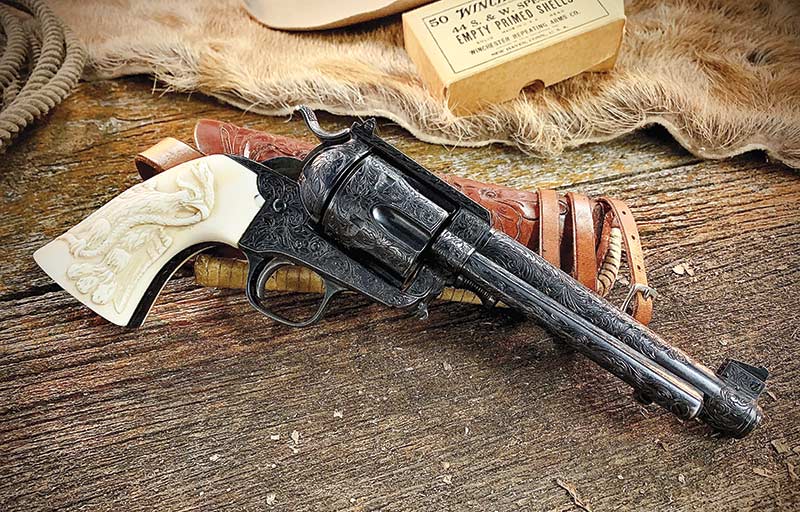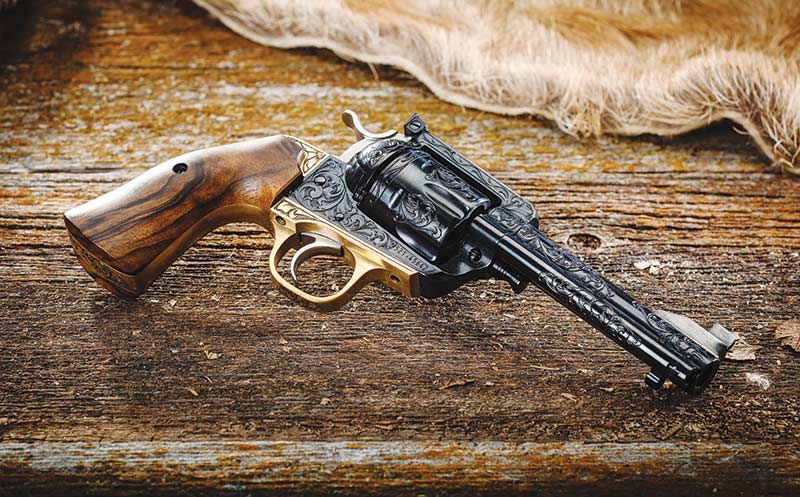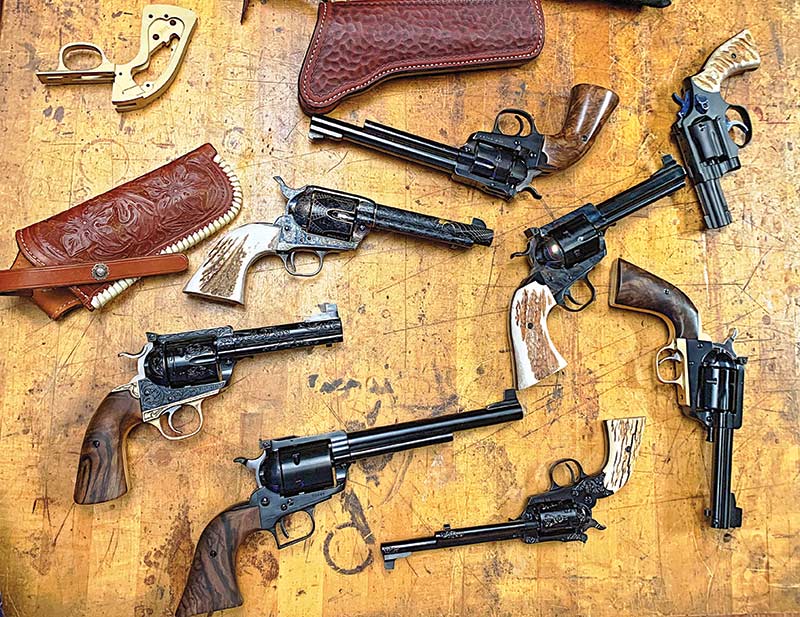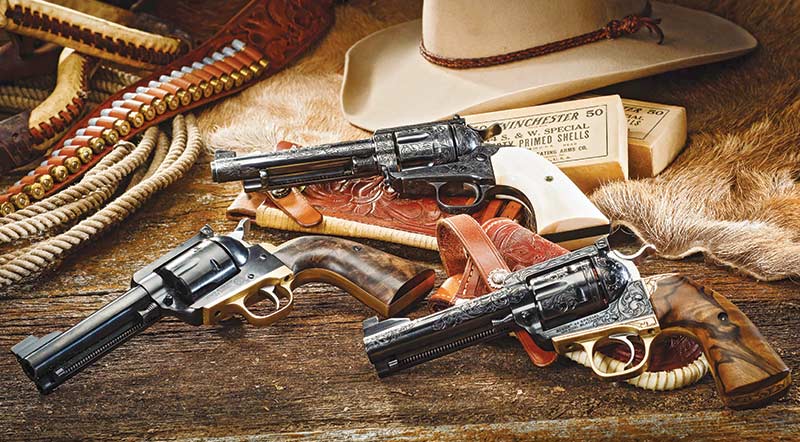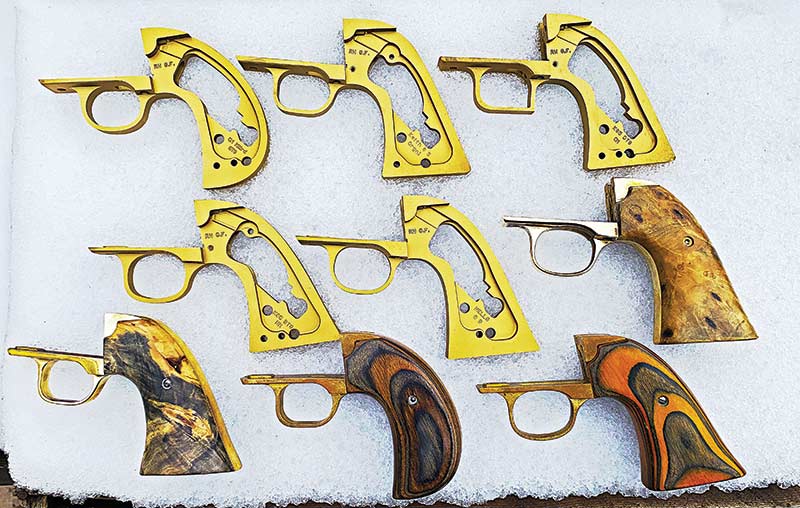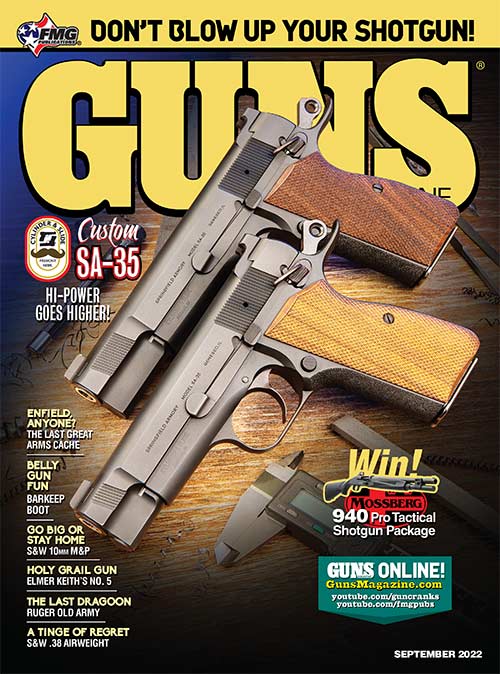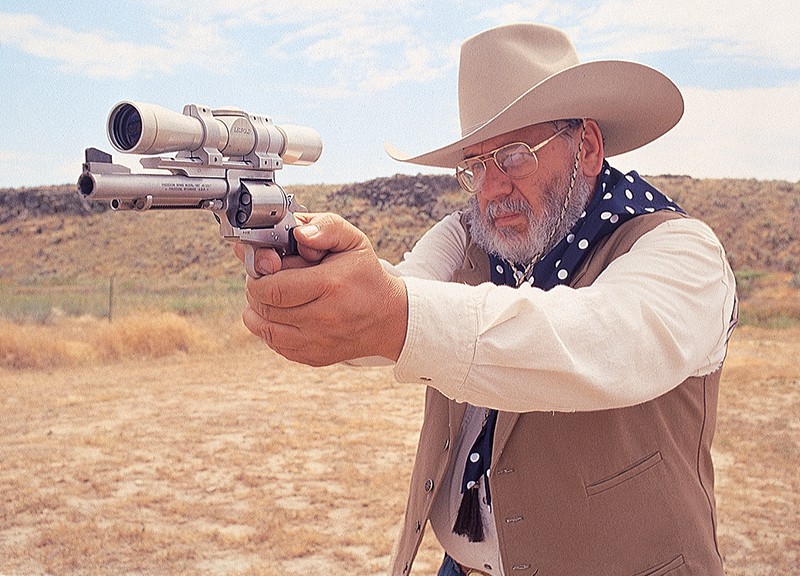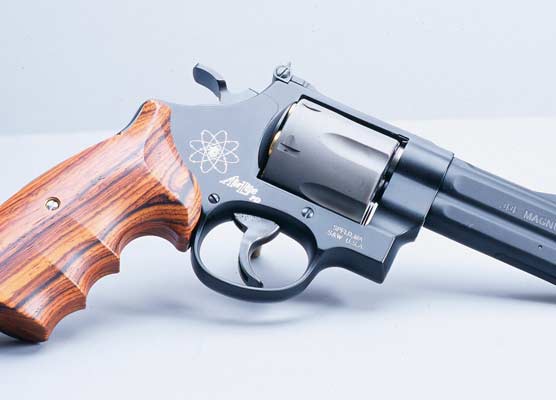The Influence Of Elmer Keith's #5
The Gun That "Started The Conversation"
In the May 1929 issue of American Rifleman, Elmer Keith wrote his famous dissertation, “The Last Word.” In it, Keith describes the virtues of his famous #5 sixgun, a custom job built on a Colt SAA platform modified to Elmer’s specifications. It made the gun more user friendly for his daily tasks as a cow puncher. The most distinguishing characteristic of the #5 is the grip frame comprised of blending a Colt Bisley backstrap mated to the front strap/trigger guard of a Colt SAA.
Elmer also demanded adjustable target sights for this sixgun, allowing him to dial-in his handloads for distant targets. We know Elmer was capable of hitting targets out to 700 yards routinely. He also wanted a locking cylinder base-pin, preventing base-pin jump from recoil, which effectively rendered the gun useless if it happened.
In a nutshell, Elmer desired an accurate, reliable sixgun capable of shooting heavy handloads accurately and the #5 fit the bill perfectly. Elmer set the stage for people to mimic or build custom guns to their own specifications.
The Bisley Name
The famous Bisley Matches date back to the 19th century and are associated with the Victorian-era clubhouse first built in 1865, then moving to its current Bisley location in 1895.
The matches challenged shooters to wring the most out of their guns and shooting skills. Colt provided an edge, releasing its Target Model in 1894. A specialty gun, it had a flat top, complete with drift-adjustable rear sights and removable blade front sight. The Target Model also had a funny-shaped grip.
The Target Colt proved itself at the Bisley Matches, later becoming commonly known as the Colt Bisley — after further refinements were made to the grip-frame and hammer. Thereafter, the “funny”-gripped gun was associated with the Bisley name and appears on guns from a range of makers. The Bisley grip-frame, namely its backstrap, is the heart and soul of #5-style sixguns.
The Ruger Bisley
Bill Ruger proved those thinking him foolish wrong on several occasions. Bringing out his rendition of the Bisley in 1984 is but one example. Not a true copy, it has a fuller grip than Colt’s version, with less radius on the inner strap. I got my first Ruger Bisley after years of shooting “heavy” .45 Colt handloads with “Ruger-only” recipes. Traditional plow-handle Ruger revolvers are small in my hand, the shape not conducive to managing heavy recoil.
Ruger’s Bisley grip-frame fixed the plow-handled knuckle-basher, giving my hand — and many others — more grip to hold onto. More importantly, the grip angle is different. Now, recoil comes straight back into the meaty part of my palm, saving my knuckle in the process. Additionally, the stylish drooping curve of the Bisley hammer accommodates one-handed cocking during target shooting while also adding to its stylish good looks!
The Bisley is my favorite factory grip design, especially amongst Rugers in big-bore boomer calibers. It’s no surprise custom builders like John Linebaugh use the Ruger Bisley model as their platform for their custom builds.
Magnum Research
Around 2015, Magnum Research added their rendition of the Bisley grip frame as an option to their BFR line. A few years ago, I tested Magnum Research’s version of Elmer Keith’s #5 in .500 Linebaugh. Using their version of the Bisley grip frame makes shooting the heavy-recoiling big-bores much more comfortable and manageable. It’s nice seeing other manufacturers follow suit with this style of grip frame.
Magnum research also offers a locking base-pin latch from their custom shop, just like Elmer’s on his original #5. It is a very cool offering not seen or even offered by many builders.
Tyler Gun Works
Well-known custom builder Bobby Tyler of Tyler Gun Works utilizes brass grip frames from Ronnie Wells on his interpretation of #5 builds. The brass grip frames beautifully accent blued frames of the guns. By adding engraving, it really makes things “pop” on his beautiful builds. While not a true copy of #5 per se, you can definitely see the influence on Bobby’s guns. His use of engraving, metal finishes and the blending of brass to blued-steel adds style and grace to his custom builds.
Besides being beautiful works of art, Tyler’s guns are wonderful shooters, too. Bobby perfectly times and tunes each gun, as well as giving them his accuracy package.
Size Matters
As mentioned, the first thing people notice on the #5 is the grip frame. Harold Croft, Elmer’s friend and fellow gun connoisseur, used R.F. Sedgley’s design on his #3 custom gun consisting of a Colt Bisley backstrap mated with the Colt SAA front strap/trigger guard. Now remember, while Elmer’s reputation was larger than life, his physical stature was on the small side, having a mere 5-½-sized boot.
I’m sure Elmer’s hands were on the small size too so the #5 grip-frame wouldn’t feel comfortable for everyone. This is where a proper grip-frame comes in. By acknowledging the many different shapes and sizes of hands out there, there is a definite need for different style grip-frames.
Grip-Frame Guru
Ronnie Wells is the grip-frame guru of the handgunner world. I guarantee he has the perfect grip-frame to fit your hand and tame recoil whenever shooting the big boomers. Or, if you want a different, cool looking grip-frame for a custom build, he can accommodate you there, too. Ronnie offers over 300 current grip-frames and can size up most people’s grip-frame needs with a 2-minute phone conversation.
Ronnie offers brass and aluminum grip-frames. He told me each grip-frame goes through a total of 147+ different cuts on a CNC machine while being built.
For the #5 grip-frame alone, Ronnie has 64 different variants to choose from. First there’s old- or new-model-style Blackhawk. Next is thickness of frame, 0.500″ or 0.440″. Then there’s Bisley, Dragoon, OM, or NM shaped trigger guards. Other considerations are amount of space from rear of trigger guard from your knuckle. If you’re going to build a custom gun, give him a call. You won’t be disappointed.
Summation
While many want to mimic a #5-styled sixgun, there are other options available that may fit your needs better. Get your hands on a #5 grip-frame before committing to one. After examining Elmer’s #5, for my hand it should have been a tad longer so my pinkie could also grip the frame, providing more comfort and control.
Having adjustable, sturdy sights is also a must if you demand top-notch accuracy. Also, being well-balanced makes its weight appear lighter. Elmer’s #5 was deceptively light when first picking it up. It was a natural pointer, too, with sights automatically lining up when aiming. These are the traits to strive for with a custom build. As it’s been said, Elmer’s influence was “merely getting the conversation started” for custom builds.
We can see the #5’s influence in several factory-made sixguns, too. Luckily, we have more resources than ever before for having our dream guns built today, thanks to the influence of Elmer’s #5.

Get More Revolver Content Every Week!
Sign up for the Wheelgun Wednesday newsletter here:
